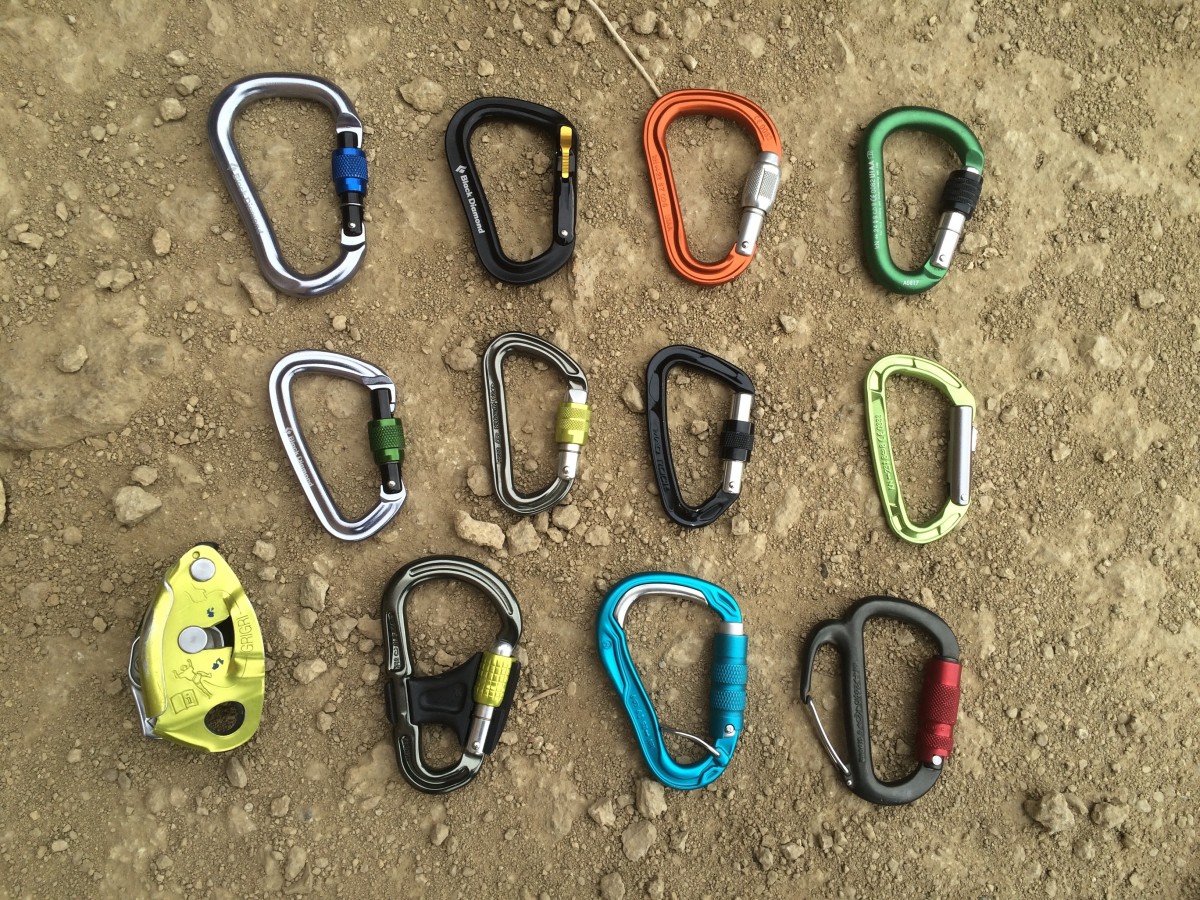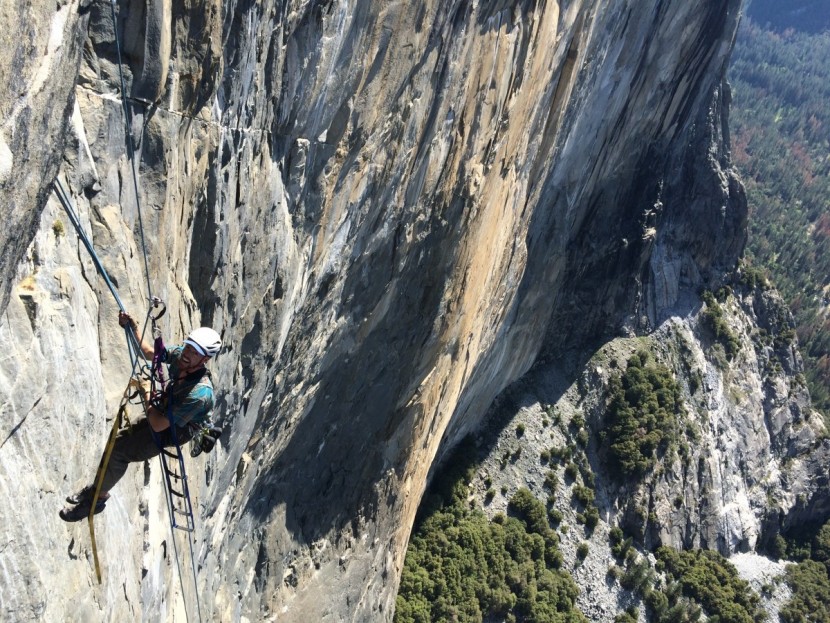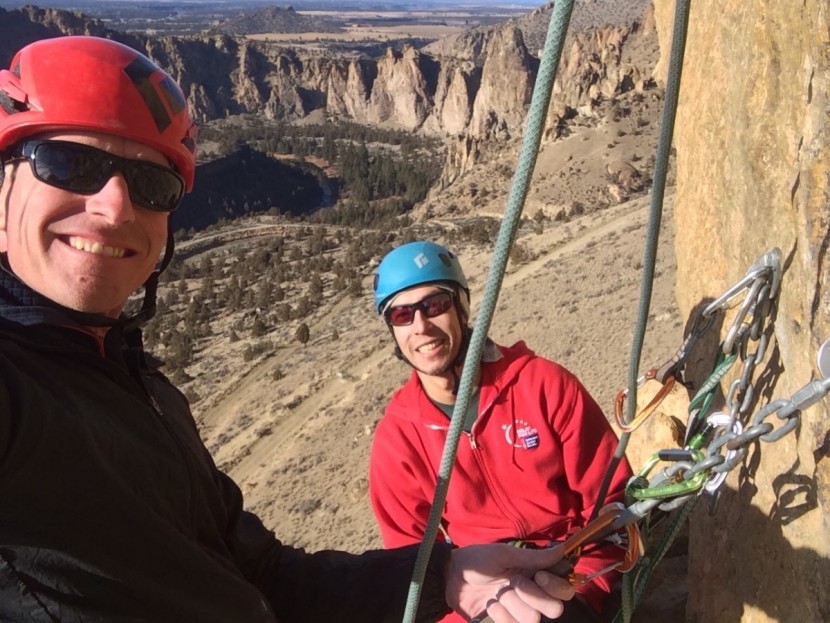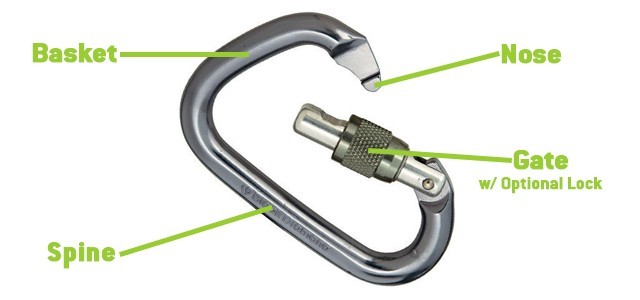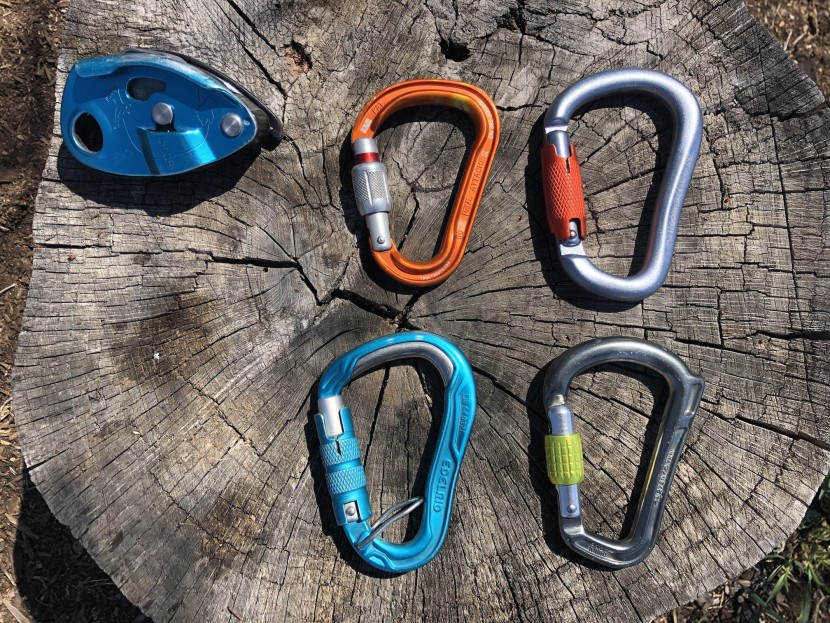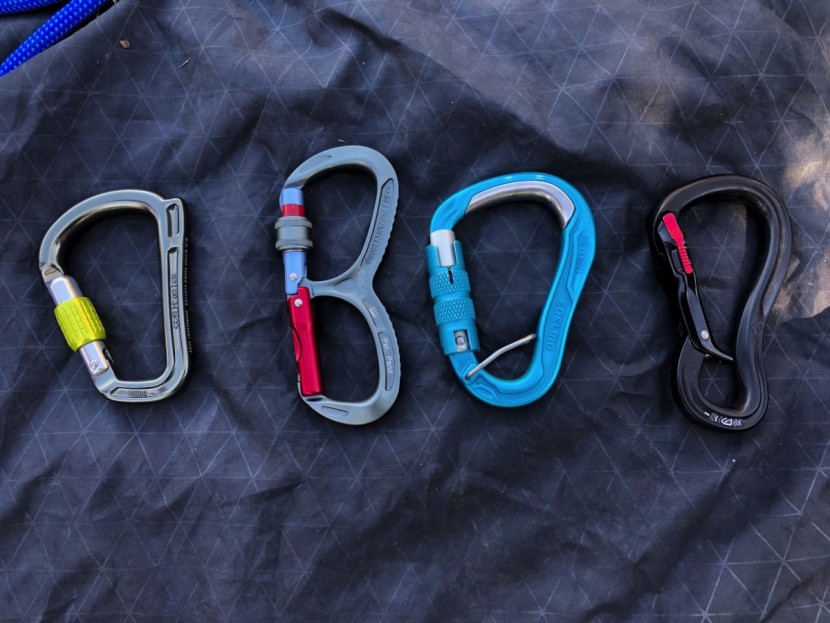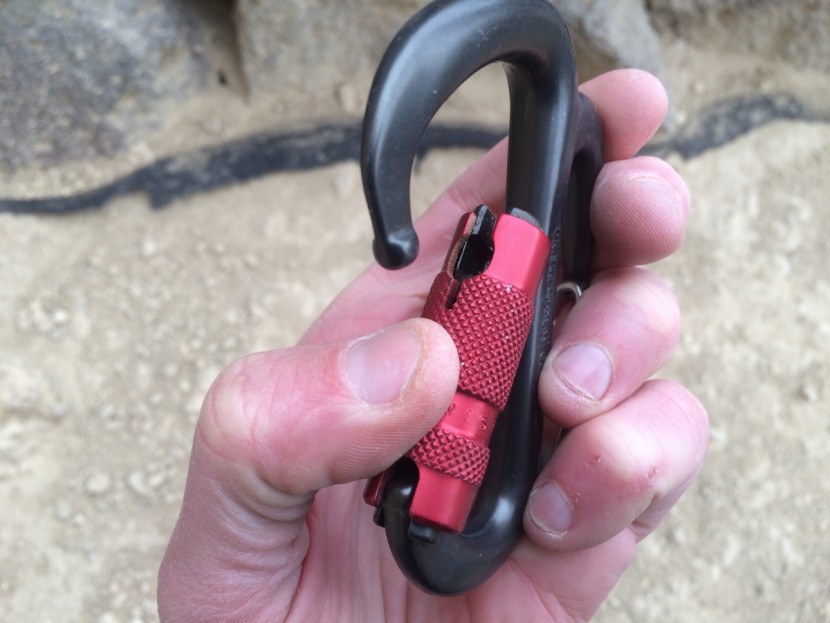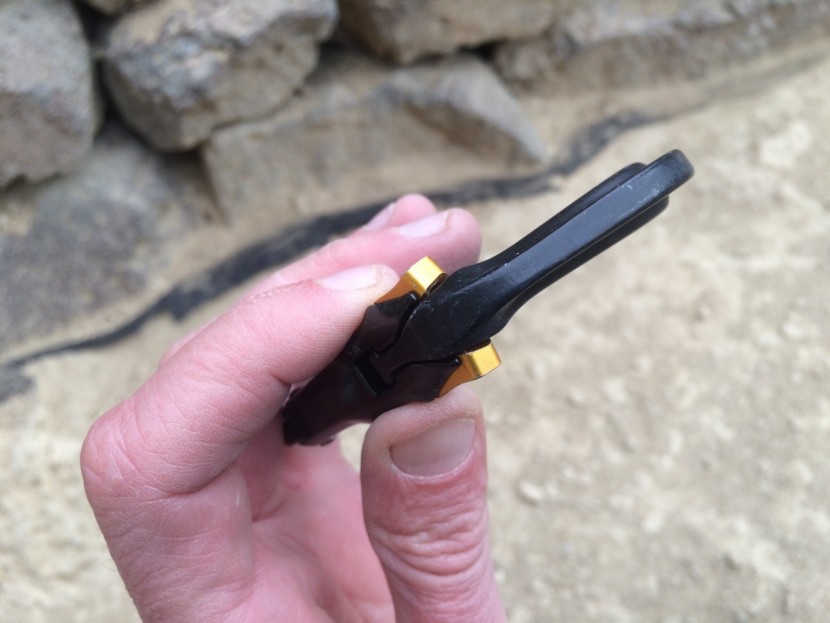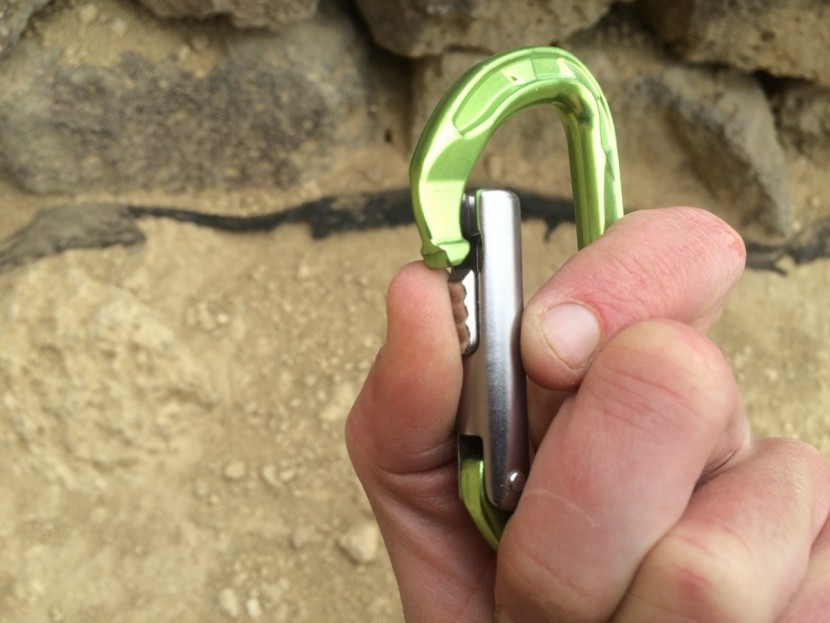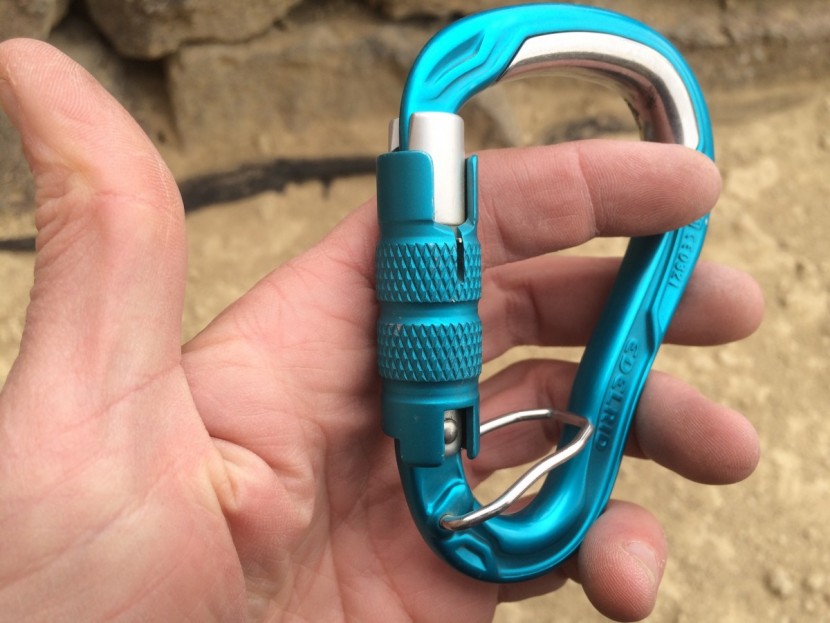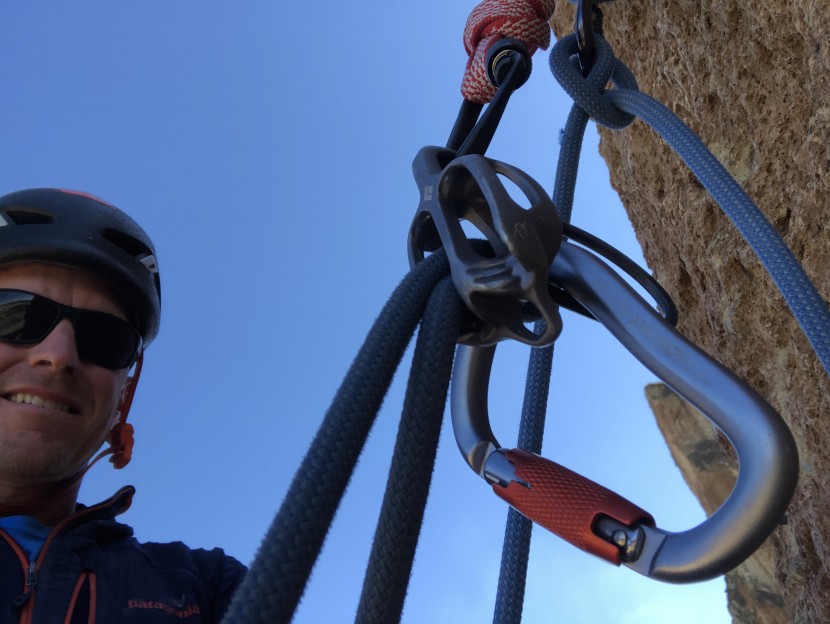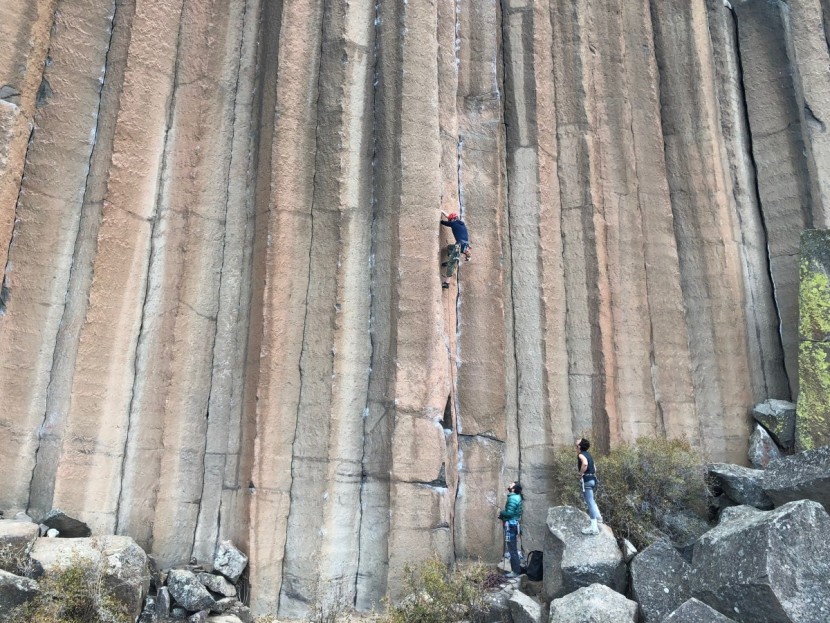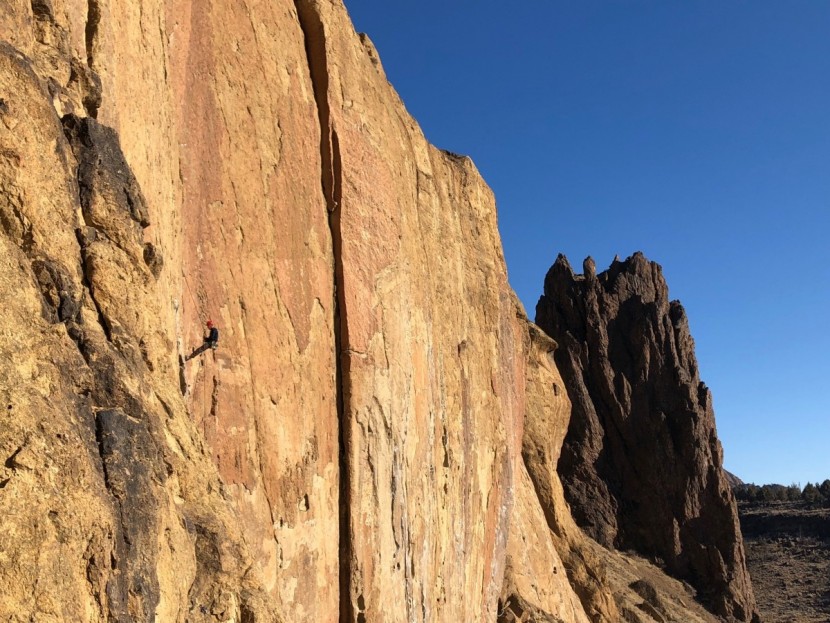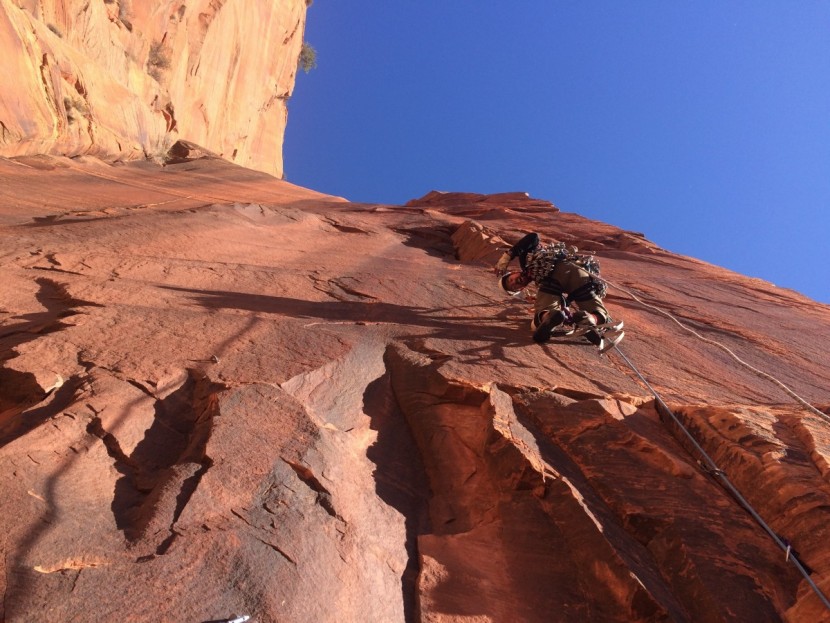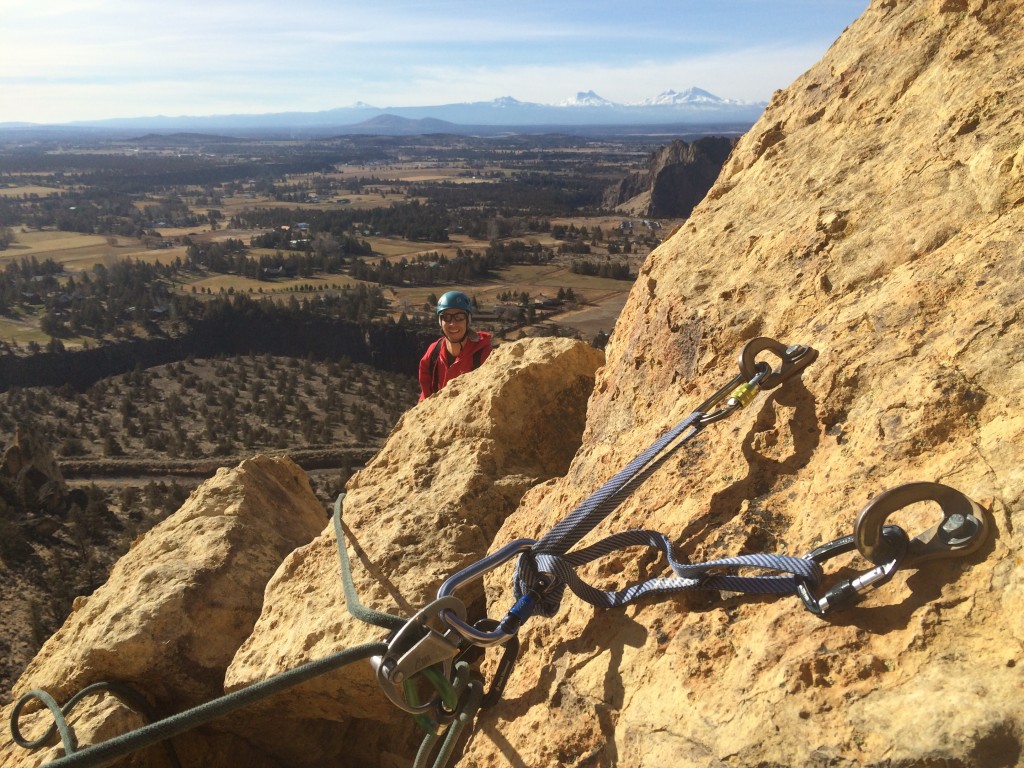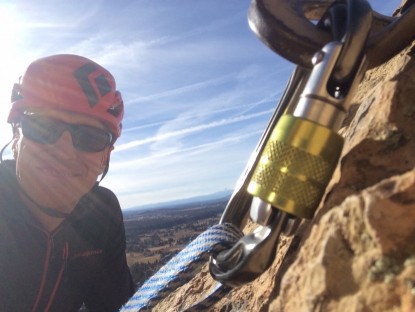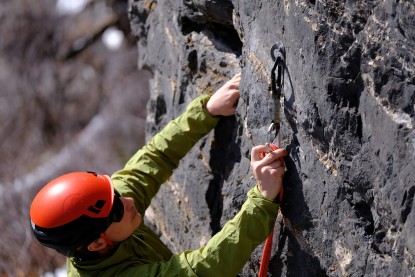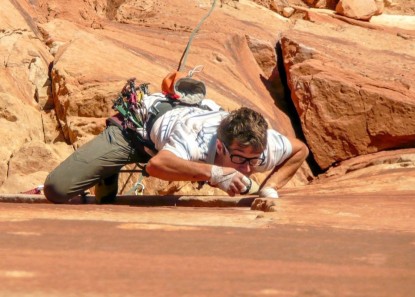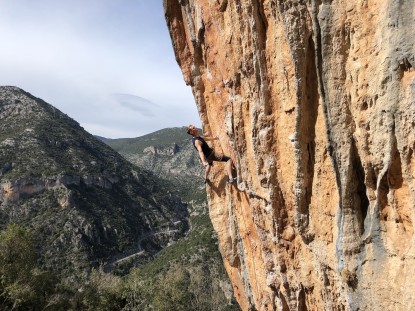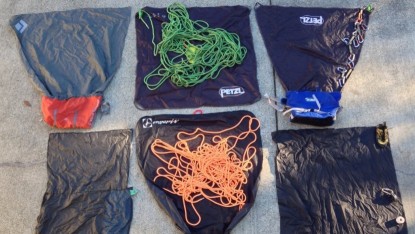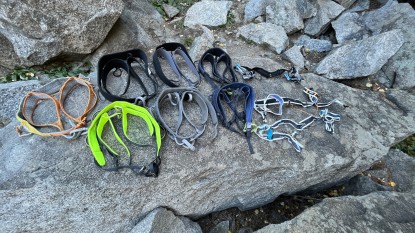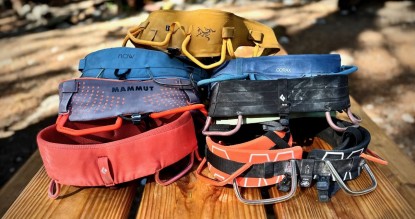Locking carabiners are an essential piece of climbing gear that continue to evolve as lighter designs and materials infiltrate the climbing protection market. While a few varieties are versatile enough to use for any purpose, most lockers, as they are commonly called, are now designed with a specific purpose in mind. There are lockers for belaying, rappelling, using as a master point of an anchor or at the end of a personal anchor system (PAS), and lightweight/compact lockers for building complex, equalized anchors for top-roping or on multi-pitch climbs. Below we will review the technical aspects and key factors in choosing a locking carabiner.
Why Use Locking Carabiners?
Locking carabiners, or just “lockers” for short, are in integral part of a climber's kit. Whether you are a beginner gym climber who just passed their belay test, an El Cap veteran building anchors for hauling heavy loads, or a lightweight alpinist climbing routes in the mountains, lockers give peace of mind when constructing safety systems that may rely on one single piece of gear. While non-locking carabiners are used in greater numbers in a typical climbing setting––think quickdraws or cams clipped with a single carabiner––they are part of a system that implies redundancy. But when doing things such as attaching the belay device to your harness, building a top-rope anchor, or clipping into an anchor with a personal tether, one relies on the security of a single carabiner. This is where a locker is preferred.
The purchasing advice given in this article is meant to help with your purchase, and should not be interpreted as climbing instruction. Climbing is dangerous, and can result in death. The systems and techniques often referred to in this article should be learned from a professional guide or certified climbing school.
Most people's first locking carabiner is the one they buy for their belay device. A few are added to the rack for constructing top-rope anchors, and even more when they start multi-pitch climbing. You might only bring a couple lockers to the sport cliff, but it's not uncommon to have six or more on your harness when heading up a multi-pitch route.
Lockers come in many varieties. While some can perform all tasks reasonably well, there are others that are better suited to specific uses. When first buying lockers, it can help to stick with generic shapes like the HMS/pear or offset-D shapes, since they are versatile enough to do most things reasonably well. Experiment with different locking designs to see what works best for you in given situations, and then as you build up your kit more, you can diversify into some of the more specialized offerings. Read on to find out more about the different aspects of locking carabiner design and construction, and then head to our locking carabiner review to find out which we like the most.
Carabiner Shape
The shape of a carabiner is important to its function in a given application. Some can be used interchangeably with little negative effect, and others perform poorly at tasks they are not designed for.
HMS Style
HMS, or pear-shaped lockers, have a wide basket and a narrow crotch. HMS stands for halb mastwurf sicherung, or the half clove hitch belay. Most climbers know this as a Munter hitch. The Munter is a hitch that takes up a lot of space on the basket of the carabiner and needs to freely move without being pinched by the spine, hence the wide basket. These are also used frequently as belay and rappel carabiners, since they allow for even feeding of brake strands without pinching because of the wide, symmetrical basket used. For this reason they are the most common first locker purchased by new climbers, and are the second most frequently used shape of locker. HMS/pear shaped lockers are possibly the most versatile, as they are capable of doing anything, but they are usually rather large, and tend to be heavier than Offset-D carabiners because their design is not as inherently strong, requiring more material to compensate. So while they can be used for any locking purpose, most climbers only use them on their belay or rappel device, or as a master point of an anchor.
Most Common Uses: Belaying, Rappelling, Master Point, Munter Hitch
Examples from Review: Petzl Attache 3D, Black Diamond RockLock Twistlock, Edelrid HMS Bulletproof Triple FG, DMM Rhino Screwgate, Metolius Element Keylock, DMM Belay Master 2
Offset-D Shape
The most popular style on the market, this shape comprises about 60 percent of the available carabiners produced. The offset-D features a wider basket that improves function, allows for a wider gate opening and can be scaled down resulting in smaller and lighter weight lockers. These carabiners effectively orient the load along the spine, so they are stronger then HMS/pear style, although not as strong as a traditional D-shape. All of the compact/lightweight lockers in this review are made in this shape.
Most Common Uses: Building Anchors, Tethering Climber with PAS, Attaching Essential Items to Climber or Anchor
Full Sized Examples from Review: CAMP USA Photon Lock, Black Diamond HotForge Screwgate, Edelrid Pure Slider
Compact Examples from Review: DMM Phantom Screwgate, Mad Rock Super Tech Keylock Screw, Black Diamond LiteForge Screwgate
D Shaped
D-shaped lockers are not very popular anymore, but are still produced by climbing companies. The standard D is the strongest carabiner design because it keeps the load oriented along the strongest axis (the spine), but is a poor performer at many other common climbing tasks due to the tight basket and crotch shape. These carabiners aren't really used for climbing much anymore, having been pretty much totally superseded by the Offset-D shape, so we didn't include any in this review.
Oval Shaped
The oval is the original carabiner design, and some companies still produce the oval shaped locker. While there are certain benefits to the oval shape, like being able to fit a lot of gear onto it, the shape is inherently weaker than others since the load is not directly in line with the spine, and does not have as wide an opening or useful basket as Offset-D or HMS lockers. We did not test any true oval locking style carabiner shapes.
Belaying Specific/Anti-Crossloading Lockers
While they don't necessarily adhere to a particular shape, there is a large selection of locking carabiners available that are designed specifically for belaying. Many of these have “anti-crossloading” features that aim to keep the carabiner oriented in the same way when clipped to the belay loop, so that it cannot become cross-loaded when a climber falls suddenly. These features range from specially shaped crotches, to wire gates, to double chambered carabiners. These carabiners tend to be HMS or pear shaped, but due to their unique features, are often not versatile for using in any other application besides belaying.
Most Frequent Uses: Belaying, Top Rope Soloing
Examples From Review: Edelrid HMS Bulletproof Triple FG, DMM Rhino Screwgate, Petzl Freino, Black Diamond GridLock Magnetron, Mad Rock Gemini, DMM Belay Master 2
Gate Closure Style
Locking carabiners are often described as being double-action or triple-action. The number of actions refers to how many separate movements are required to open a locked gate. A non-locker is single action, requiring only one movement, that of opening the unlocked gate. A screw gate locker is a double action, requiring you to unscrew the locking mechanism, and then open the gate––two actions. Standard twist gate auto-lockers, like the one found on the BD RockLock Twistgate, are also double action. Triple-action lockers, such as the Edelrid HMS Bulletproof Triple FG require three actions, in this case slide, twist, and then open. Below we briefly describe the four styles featured in our review, which does not represent all styles of locking carabiner closures out there. It is very common for manufacturers to release the same carabiner design using two or three different styles of locking mechanism, so you can choose which one you like best.
Screw Gate
This is by far the most popular style of gate closure system. The screw gate relies on a small metal cylinder which screws up and over the nose of the carabiner, preventing the gate from being opened. Some designs, like the DMM Belay Master 2, use an additional closure that further prevents the screw gate from opening. The downside to standard screw gates is that they must be manually closed each time, something climbers often are forgetful about. For this reason, Petzl put a red stripe along the gate of the Attache to indicate whether it is closed or not — “See red, you might be dead!” Most of the lockers we reviewed, and use, are screw gates. They are also usually the most affordable type of locking carabiners.
Twist Gate
Twist gates, such as on the Petzl Freino, can sometimes be more cumbersome to open, but the locking mechanism is automatic once released, thanks to an internal spring, making for a potentially more user-friendly tool, especially when used with belaying. The moment the gate closes, the 'biner becomes locked, adding an element of gate security due to the fact that it is impossible to forget to lock them. The downside is that when trying to remove them from places that don't need them to be locked, such as a gear loop on your harness, they are still locked and need to be manipulated in the right way to get open.
Magnet Gate
Black Diamond makes auto-locking carabiners that use small magnets on either side of the nose to hold the gate closed. To open the gate, simply depress the lever armed triggers on either side of the gate to disengage the magnets, and then open. This is a double-action design that does not use the common twisting mechanism, and is also auto-locking upon closure, so there is no need to remember to lock the gate. This system is surprisingly simple to get used to, but does have the downside of the magnets attracting ferrous material if left in the dirt, becoming sticky or sometimes clogged. Also, when used in cold and icy conditions the gate is more likely to freeze shut than others, and depressing the triggers can be more challenging with thick padded gloves on.
Slider Gate
The Edelrid Pure Slider uses a small, sliding locking mechanism that hangs up on the nose of the carabiner when the gate is closed, and is easily slid down the shaft of the gate with one finger before opening. While it is a double-action auto-locker, it is a bit less secure than the others tested because it is so incredibly easy to slide open the small locking mechanism. However, for this same reason the Pure Slider is a good fit for the end of quickdraws or slings where you want a little extra security, but can't stop to fiddle with locking a regular locker.
Construction
Type of Metal
Locking carabiners are made out of either steel or aluminum. Steel carabiners are very durable, and are becoming ubiquitous as the 'biners on the end of fixed draws at sport cliffs or in gyms, or the lower off 'biners left at the top of climbs at popular areas. These uses are common for non-lockers; steel lockers are generally more expensive, stronger, and weigh a whole lot more than their aluminum counterparts, to the point where there is no reasonable climbing application. Aluminum locking carabiners are lighter, are made in a greater variety of shapes and weights, and are a good choice for the majority of climber's needs. All of the locking carabiners reviewed here are aluminum construction.
Anodizing
Aluminum carabiners come either with a burnished metal finish, or are available with an anodized finish. Anodizing is a very thin layer applied over the entire surface of the carabiner, making the finish feel smoother, and allowing for different colors, which can help differentiate carabiners on your harness. The Edelrid Pure Slider and Petzl Attache are both good examples of anodized locking carabiners. Beyond cosmetics, however, anodized lockers are more impervious to the types of corrosion found in marine environments. Salty sea air reacts poorly with aluminum and can corrode the material, so if you climb regularly near the ocean, or if you take a climbing holiday to a place like Mallorca or Thailand, keep the corrosion in check by washing your gear regularly.
Stock Shape
The stock of the carabiner refers to the shape of the material that it is made out of. Common stock shapes include round, oval and I-beam. The less material that the stock is made from, the lighter the carabiner's weight will be. I-beam stock construction has become the most common, and is allowing carabiners to be produced at competitive strengths at a fraction of the weight. Weight is not always the final consideration though; as the stock shape goes from round towards I-beam, the radius will decrease. This decreased radius will make the rope turn sharper when clipped into the locker under load, and will result in an increase of friction. When using a belay device in plaquette-mode, such as the Black Diamond ATC Guide, this increase in friction can make for a more tiresome belay. The round stock found on the Black Diamond RockLock Twistlock was kinder on our elbows during long belays. I-beam carabiners are also less durable when handling abrasion and friction. If choosing lockers that will be on the rope end of a top rope anchor, solid round stock carabiners will last longer.
Forging Process
Locking carabiners are forged either through cold forging or hot forging processes. Both produce lockers that are strong and durable, though each process has its own benefits. The cold forging process is the traditional way carabiners have been produced, by taking a piece of aluminum and bending and stamping it with no additional heat applied.
Hot forging is when both the rod stock and forge dies are heated prior to working, a process that allows for the creation of more intricate shapes such as the Edelrid Pure Slider. Some users have complained about the lack of durability in hot forged shapes, this is likely due to the inherent decrease in metal used in the creation of many of these more sculpted designs.
Strength
All of the carabiners in this review are tested to the CE, UIAA or ISO standards, and often a combination of more than one. We don't recommend cluttering your minds up too much by obsessing over what these agencies or standards mean, and encourage you to simply rest assured that all of the lockers in this review are tested and strong. It is required that locking carabiners (and all carabiners for that matter) have the CE testing standard and strength limitations printed along the spine. If you are concerned about whether a piece of gear you have is up to date, modern, safe, or legitimate, look to the spine to be sure it has the CE certification standard printed on it, as well as its strength limits (described below). The strength of a carabiner is dependent upon which axis it is loaded.
Major Strength Axis
The major strength axis is in line with the spine, with the carabiner being pulled simultaneously from the basket and the crotch. This is the strongest orientation and requires a minimum 20kn breaking strength. It is the first number printed with arrows pointing each direction, and is described in kN (kilonewtons), which is 220lbs. of force.
Minor Strength Axis
Is perpendicular to the major strength axis, and is when the carabiner is pulled against both the gate and the spine. This is not the way carabiners are designed to be used, but it's not uncommon for a locking carabiner to rotate and become loaded, especially when belaying, called “cross-loading.” This is a weak orientation, to be avoided, and requires a minimum of 7kn breaking strength. This is the second number printed, with arrows pointing up and down.
Open Gate Strength
Refers to the carabiner's strength when loaded with a gate open. This can occur when a locking carabiner is improperly locked, or when it is inadvertently pinned and opened against the rock or other material. The open gate strength standard is 7kn for Offset-D shapes, and 6kn for HMS/pear shapes. This will be the third number printed, next to a pictogram of an opened carabiner.
Choosing the Right Carabiner for You
Deciding which type of lockers to buy is largely dependent on answering two questions about you and your climbing: What stage of my climbing career am I at? and What type of climbing do I intend to do? Beginner climbers need far fewer lockers than an experienced climber enlarging their rack for their first big wall. Below we try to give you our best suggestions based on the answers to these questions:
Beginner Climbers
Those just starting out only need one locking carabiner, for belaying. We recommend checking out one of the anti-crossloading, belay specific carabiners for this purpose. Our favorite belay carabiners are the DMM Rhino and the Edelrid HMS Bulletproof Triple FG, although any carabiner designed for belaying will work. While they don't specifically prevent cross-loading, regular HMS or pear-shaped lockers work great as well, such as the Petzl Attache or BD RockLock Twistlock.
Outdoor Cragging
We define “cragging” as single pitch climbing, outdoors, either sport or trad protected. If you are at a well-established climbing area like Smith Rock or Red Rocks with bolted anchors at the top of the pitch, then it is easy to get by with only one locker per climber, the belay locker. However, it can be nice to have a couple more lockers on hand just in case. These can be used for setting up top-ropes if need be, or for the ends of your PAS if you use one. The first add-ons that we would make to our rack of lockers would be a couple of standard Pear or HMS style, like the Petzl Attache, which are by far the most versatile lockers, and quite light.
Multi-pitch Climbing
When you want to climb high off the ground in multiple pitches, the need for more lockers becomes readily apparent. We recommend learning how to handle the ropes and systems of multi-pitch climbing from a guide or climbing school, or very experienced mentor, before embarking upwards. Provided you have the knowledge, multi-pitch routes can be climbed with as few as three or four lockers per climber, but the more lockers you have, the simpler things become, since you don't need to be so conscious to save your lockers for the most important places in your belay chain. Provided you already own a belay locker and two or three all-around Pear shaped lockers, the next addition we would recommend making is adding two to five small lightweight lockers. These make constructing anchors a breeze, and can also be used for attaching valuables to yourself or the anchor. Our favorite compact lockers are the DMM Phantom Screwgates, but a very good value purchase that are lightweight and larger, therefore a bit more versatile, are the CAMP USA Photon Lock.
Big Walls
If you're looking to break into big wall climbing with a trip up the Nose of El Cap, or some of the other classic multi-day routes in Yosemite or Zion, you will need a lot of lockers. Lockers seem to just disappear on walls, getting used by the hauling system, in the belays, and in the personal anchoring systems like the ends of daisy chains and backups. At anchors you need more lockers, and at bivies there never seems to be enough. A baseline would be to consider doubling the amount of lockers you own for single day multi-pitch free climbs. On big walls, knots are being tied all over the place, so pear-shaped lockers with large gate openings and baskets are far more versatile than tiny lightweight lockers. No prospective big wall climber would regret adding a half dozen Attaches to their collection.
Alpine and Ice Climbing
The number and types of lockers needed for alpine or ice climbing is very similar to the needs while cragging or multi-pitch climbing on rock. It is wise to carry a few extra lockers on the harness if you are going to be crossing glaciers on your mountain adventures (and be sure you know how to rescue someone!) Consider the fact that you will be wearing gloves, and that ice could potentially cause a gate to freeze up. Screw gates are generally the easiest types of locking gates to manipulate with gloves on, and we would certainly value lightweight if we were going to be dragging this gear all the way up a mountain and back.
Conclusion
Knowing about the different shapes, construction styles, gate styles, and strength helps you be confident in the performance of your climbing gear. In the end, the correct locker for the job will depend on what you intend to use it for as the first consideration, followed by weight, price, and quantity you intend to purchase as secondary considerations. We hope this article was helpful in your search for the best locking carabiners, and be sure to check out our full review for our top recommendations.

